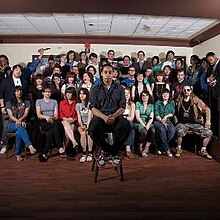
Richard Martin Lloyd Walters, better known as Slick Rick, is an English-American rapper and record producer. He rose to prominence as part of Doug E. Fresh & the Get Fresh Crew in the mid-1980s. Their songs "The Show" and "La Di Da Di" are considered early hip hop classics. "La Di Da Di" is one of the most sampled songs in history.
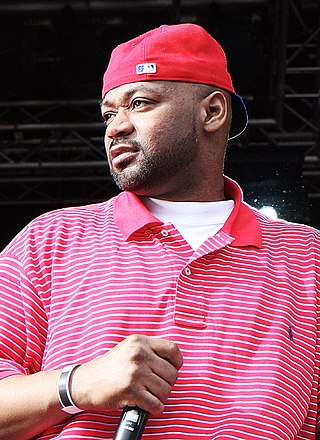
Dennis David Coles, better known by his stage name Ghostface Killah, is an American rapper and a member of the hip hop group Wu-Tang Clan. After the group achieved breakthrough success in the aftermath of Enter the Wu-Tang , the members went on to pursue solo careers to varying levels of success. Ghostface Killah debuted his solo career with Ironman, which was well received by music critics, in 1996. He has enjoyed continued success in the years that have followed, releasing critically acclaimed albums such as Supreme Clientele (2000) and Fishscale (2006). His stage name was taken from one of the characters in the 1979 kung fu film The Mystery of Chess Boxing. He is the founder of his own record label, Starks Enterprises.

Nicholas Neil Carter, better known by his stage name Murs, is an American rapper. His name is an acronym for which he himself has created multiple meanings, such as "Making the Universe Recognize and Submit" or "Making Underground Raw Shit."

John David Jackson, better known by his stage name Fabolous, is an American rapper. Raised in Brooklyn, he first gained recognition for his ability upon performing live on DJ Clue's Hot 97 radio show. Jackson then signed to Clue's record label Desert Storm Records, in a joint venture with Elektra Records. He rose to further prominence with his debut studio album Ghetto Fabolous (2001), which spawned the hit singles "Can't Deny It" and "Young'n ." Adopting a further commercially-oriented approach, his second album, Street Dreams (2003), was supported by the singles "Can't Let You Go" and "Into You" —both of which peaked at number four on the Billboard Hot 100.

Anthony Cruz, better known by his stage name AZ, is an American rapper. Best known for his affiliation with hometown native and fellow East Coast rapper Nas, they formed the New York City-based hip hop group the Firm along with Foxy Brown, Cormega and Nature in 1996. Cruz first saw recognition for his guest appearance on Nas' 1994 single "Life's a Bitch", from his album Illmatic (1994). Cruz was then signed by EMI to release his debut studio album, Doe or Die (1995), which was met with critical acclaim. Its lead single, "Sugar Hill" peaked at number 25 on the Billboard Hot 100 and received gold certification by the Recording Industry Association of America (RIAA). Moreover, The Firm's sole album (1997) peaked atop the Billboard 200 chart despite unfavorable critical response; the group disbanded two years later.
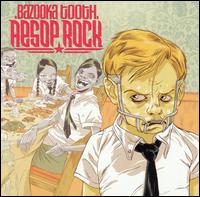
Bazooka Tooth is the fourth studio album by American hip hop artist Aesop Rock. It was released on Definitive Jux in 2003.
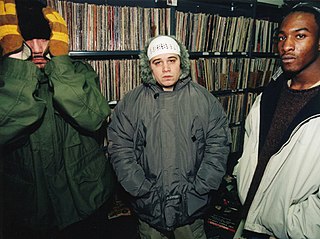
Jedi Mind Tricks (JMT) are an American underground hip hop group from Philadelphia, founded in 1996 by two high school friends, rapper Vinnie Paz and producer Stoupe the Enemy of Mankind. In 1999, rapper Jus Allah joined the group to record their second studio album, Violent by Design. Jus left the group shortly after, but returned in late 2006 and began working on the sixth studio album, A History of Violence. In 2011 Stoupe left the group because "his heart wasn't in making JMT records anymore". In 2013, Jus split from the group indefinitely, and Stoupe returned in 2015.

Hope is the first studio album by American hip hop duo Non-Prophets. It was released on Lex Records on September 29, 2003. The album was produced entirely by Joe Beats and all vocal duties were handled by Sage Francis. "Damage" was released as a single from the album. The album peaked at number 9 on the CMJ Hip-Hop chart.

Roland "Rollie" Pemberton, better known by his stage name Cadence Weapon, is a Canadian-American rapper based in Toronto, Ontario. Born and raised in Edmonton, Alberta, Pemberton released his first album, Breaking Kayfabe, in 2005 with positive reviews. He subsequently signed with the American record label ANTI-, releasing the albums Afterparty Babies in 2008 and Hope in Dirt City in 2012. In 2009, Cadence Weapon was named Edmonton's Poet Laureate. His first book Magnetic Days was published by Metatron in 2014. Cadence Weapon released a self-titled album in 2018.

Breaking Kayfabe is the debut album by Canadian rapper Cadence Weapon, released in 2005 on Upper Class Recordings. It was also released in the United States by Anti-Records on March 13, 2007. Breaking kayfabe is a professional wrestling term for "breaking character".
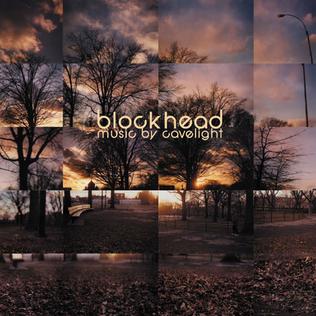
Music by Cavelight is the first solo studio album by American hip hop producer Blockhead. It was released on Ninja Tune on March 23, 2004. It peaked at number 43 on the UK Independent Albums Chart. It received generally favorable reviews from critics.
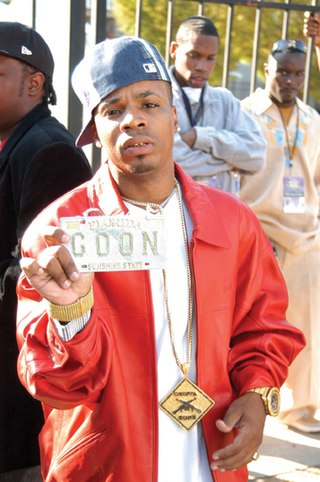
Algernod Lanier Washington, better known by his stage name Plies, is an American rapper. Born in Fort Myers, Florida, Plies was a wide receiver on the Miami Redskins football team of Miami University in Ohio for two years in 1995 before embarking on a musical career. After a brief transfer to University of Central Florida, he dropped out and signed with the South Florida-based record label Slip-n-Slide Records in 2004; after four mixtapes, he signed a joint venture with Atlantic Records two years later.

Upper Class Recordings is a Canadian independent record label founded in 2000 in Toronto, Ontario. The electronic music-based Upper Class roster includes The Russian Futurists, Cadence Weapon, DVAS, Christien Summers and The Cansecos.

The discography of American rapper Ace Hood consists of 4 major-label albums, 2 independent albums, 15 singles, 2 EPs, 21 mixtapes, and 89 guest appearances.
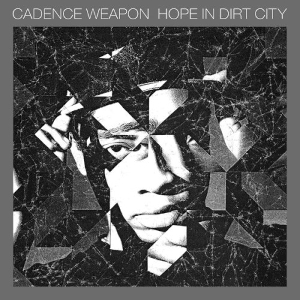
Hope in Dirt City is the third album by Canadian rapper Cadence Weapon. It was released on May 29, 2012, on Upper Class Recordings.

Monolith is a studio album by American hip hop producer Omid. It was released by Mush Records on September 16, 2003.

Ghetto Blaster is a studio album by American hip hop producer Push Button Objects. It was released on Chocolate Industries in 2003. It is the follow-up to Dirty Dozen.

Rob Bakker, better known by his stage name Muneshine, is a Canadian recording artist, record producer, DJ and mix engineer and performer. Since 2005, Muneshine has released three major label projects in Japan, and contributed production and vocal appearances on more. His sales in this territory exceed 40,000 units His first release debuted on HMV Japan's hip hop charts at No. 8. Since then, Muneshine has collaborated with a number of popular American hip hop musicians, including Pete Rock, Sean Price, DJ Spinna, Buckwild, Guilty Simpson, Nature, and Rob Swift.

Tsutomu William "Tom" Shimura, better known by his stage name Lyrics Born, is a Japanese-American rapper, singer, and producer. He is one half of the duo Latyrx with Lateef the Truthspeaker.

Parallel World is the fifth studio album by Cadence Weapon, nee Roland Pemberton, released April 30, 2021. The album was the winner of the 2021 Polaris Music Prize.
